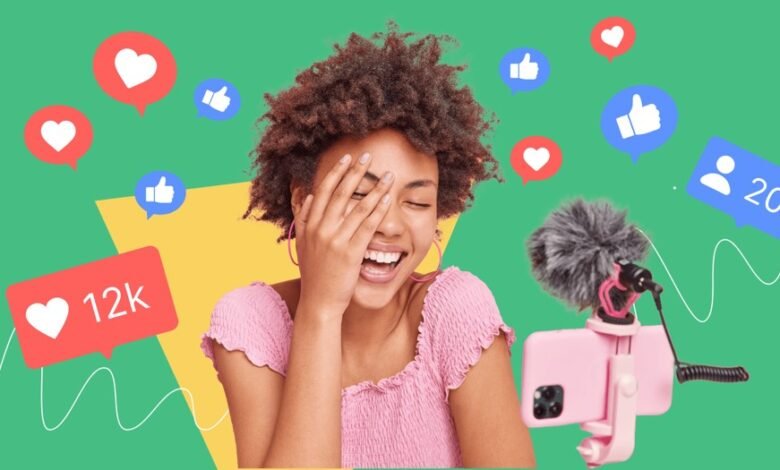Influencer Marketing: What an Influencer Strategy is and How it Works

If you are here it is because you have heard a lot about influencers and are thinking of including them in your advertising strategy.
And it seems logical and correct to me.
Social networks have made influencers grow en masse and more and more people are making money by promoting brands.
And brands making money by interacting with influencers who have a large community of loyal followers.
Specifically, companies have invested more than 100 million euros in influencers in the last year .
That is the question.
You also want to earn more money and grow in authority by including the image of influencers in your campaigns.
Therefore, I am going to explain to you what Influencer Marketing is and how to campaign with famous people effectively.
At the end you will see examples of brands that have done successful campaigns with influencers, to serve as inspiration.
Let’s go there!
Related: Top 5 Digital Marketing Jobs for Beginners in 2021
What is Influencer Marketing?
Influencer Marketing is a strategy that has gradually gained strength and more and more businesses are applying to improve visibility and sales.
It’s about doing ad campaigns with famous people whose social networks are fuming , so to speak.
An influencer shows his followers a product that a brand has sent him, tests it and recommends it so that the company receives a sales wave in return.
And the truth is that it works.
You know why?
Because people buy products when they trust us . We don’t want anyone to scam us. And that other people assure us that this product is good, it is useful, it is worth it… we trust and buy.
Well, as long as the influencer has a strong relationship with their community and doesn’t cheat.
What is an influencer
But what is an influencer really? You will ask yourself.
An influencer is a person with a good number of followers on social media who interact with their content . They could even become fans, at one point.
Influencers have a lot of presence in the channel where they are shown and their opinions greatly influence the people who follow them.
They have earned authority and trust based on content that their followers like.
Related: Top 10 Visual Content Marketing Trends in 2021
Types of influencers
Influencers are usually divided by number of followers:
- Nano-influencers (2K – 5K) They are humble, collaborative, opinion and create content for fun aspiring to be more influential.
- Micro-influencers (5K – 100K) They are not celebrities but they have a greater engagement with their followers, by dedicating more time to them and professionalizing their content.
- Macro-influencers (100K – 500K) People who make a living creating content on networks and have positioned themselves as specialists in some sector.
- Fame-influencers (500K – 1M) People who have become famous through other means and have started collaborating with brands to influence their followers.
- Mega-influencers (+ 1M) Celebrities whose followers come from all over and do not have as much engagement, since they follow them for the mere fact of being famous.
I also believe that there are types of influencers depending on the theme or sector in which they operate.
So that you can see it clearly:
- Influencers from the world of Fitness – All its content is related to sports, fitness and food.
- Gaming Influencers – They record content and interact with their followers while trying video games on Twitch, Youtube, etc.
- Foodies influencers – All its content is linked to food, trying restaurants, making recipes …
- Fashion influencers – Fashion trends, clothing order unboxings, modeling …
- Celebrities – Famous of any medium (TV, radio, press, reality shows, music, cinema …)
- Entertainment influencers – They entertain based on humor, memes, parodies, vlogs on YouTube showing their life, travel …
- Movement influencers – They are advocates , inclusive, they denounce discrimination against groups such as LGTBI, gordofobia … They give visibility to taboo topics.
Related: 5 Basic Online Marketing Tactics for Driving Traffic to Your Website
Advantages and Benefits of Influencer Marketing
Now that you know what Influencer Marketing is and what it consists of, you will have seen the advantages, right?
And there are many.
The main one is the visibility it gives you as a brand.
The fact that people with thousands of followers talk about your products already allows you to reach a large number of potential customers.
On the other hand, authority.
If influencers speak well of your products, that benefits you in terms of reputation.
Your brand will begin to bond with those people, and if they are an admired influencer, they will extrapolate that sentiment to your products.
Finally, and as a consequence of the above, the increase in sales.
At this point is where you have to do a good job.
Because it is useless for an influencer to promote your products if the shopping experience is going to be disastrous.
The influencer will bring you customers, and your job is to retain them and make them buy again.
How to do an Influencer Marketing Campaign
Now I am going to explain what you should take into account, step by step, to make an effective influencer marketing campaign.
Analyze your target audience
The first thing is to be clear about who your ideal client is.
Who do you want to buy your products? Who do you want the influencer to influence ?
Here you will take into account factors such as age, gender, profession, interests and hobbies … among other things.
I leave you here a post that can be useful if you have not yet defined your buyer person.
And the most important question: what social network are you on?
Because it makes no sense to choose an influencer whose followers are on Tik Tok if your ideal client uses Instagram, for example.
Determine the objectives in your influencer strategy
Think about the goal you want to achieve with the collaboration with influencers.
Do you want to increase sales in X product? Do you want to have a greater reach? Do you want to gain reputation? Do you want to launch a new product?
These are questions that you should ask yourself, because based on your objectives you will define the advertising campaigns and you will choose one influencer or another.
For your goal to be realistic, you have to define a SMART goal.
If you don’t know it, SMART means:
- S – Specific – Specific
- M – Measurable – Measurable
- A – Attainable – Attainable
- R – Relevant – Relevant
- T – Timely – In a given period of time
Research how other brands collaborate with influencers
Analyze your competition or companies similar to yours, even if they do not belong to the sector.
See what kind of influencers they collaborate with and what kind of campaigns they run. In which channels are they advertised and how long do the campaigns last?
You can use tools such as Metricool (freemium), to analyze the social networks of both the competition and the influencers themselves.
Facebook Ads Library (free) BigSpy and Publisuites (freemium) can help you analyze ad campaigns and their ads.
Define your budget
You have to be realistic with the budget that you are going to invest in your advertising campaigns with influencers.
You cannot expect to spend little money if your goals are very ambitious.
More than anything because you will not only have to invest in the influencer you choose, but you will also make an investment in products for their promotion, in advertisements on networks if you wish, etc.
Choose the influencers related to your brand
Based on all the above, you will choose the influencer or influencers who will collaborate with your brand.
Nowadays it is difficult to contact an influencer directly, unless they are a nano-influencer or micro-influencer and manage collaborations on their own.
The normal thing is to contact the agencies and that they offer you packs of influencers depending on your objectives and budget.
The pack will have one price or another depending on how many influencers you want, the cache, and the number of followers and their engagement.
Ideally, you work with influencers who have to do with the interests of your ideal client , previously defined.
For example, if you are going to sell vegan food, the logical thing is to choose foodies influencers or those who are in the world of fitness.
In addition, they also have to be influencers who can be identified with your brand values, so that there is some credibility.
And of course, that they are in the social network you want to work with.
Plan and execute the influencer campaign
Once you are clear about all these factors:
Your potential clients, social networks, your objective, your budget and the influencers in your marketing strategy …
It’s time to get down to business.
You will have to send a briefing to your influencers, which is nothing more than a document with all the information about the campaign, the product they are going to promote and your brand.
In addition, they are usually provided with the material with which they are going to generate the content : videos, infographics, images, creatives and logos, copies … as well as the guidelines for how promotions should be.
Measure and optimize results
Finally, the determination of KPIs to measure and optimize results.
Because what is not measured cannot be improved, and if you are not aware of your campaign with influencers, there may be a problem or crisis and you are not finding out about anything.
In your Influencer Marketing strategy, you will measure factors such as the scope of the campaign, the interaction of the followers, the conversions obtained and the customer loyalty.
Still, to give you an idea, some KPIs that I would take into account would be:
- The CTR (click-through rate) of the posts and ads to your website.
- The number of sales
- The percentage of conversions (visits to pages, additions to the cart, sales …)
- The number of posts with the branded hashtag.
- The number of new followers to the brand.
- The number of interactions on the influencer’s posts.
- Etc.
Conclusion
I hope this post has helped you understand what Influencer Marketing is and the benefits it can bring to your brand.
You already have all the steps to create your sales strategy with influencers and some examples that can serve as inspiration.
Now tell me, is there an influencer you would like to collaborate with? Do you have any crazy ideas in mind?
Tell me in comments.












One Comment